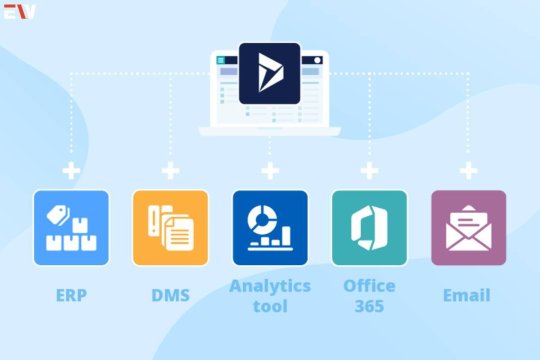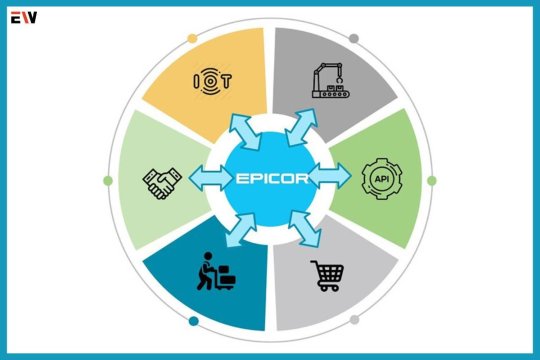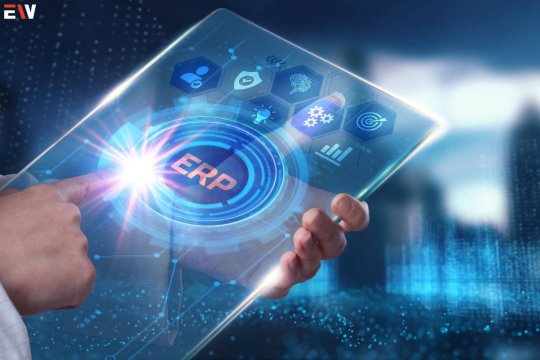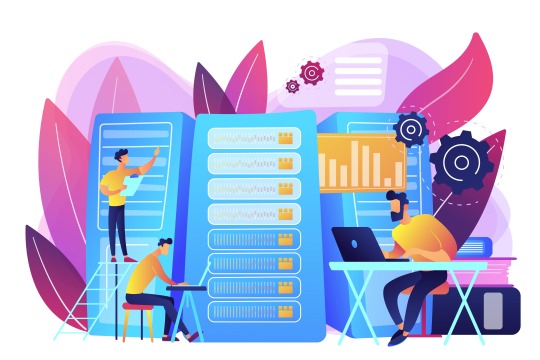#sap ai core
Explore tagged Tumblr posts
Text
AI SO's on your birthday
(Included: AM from IHNMAIMS, Wheatley from Portal 2, Edgar from Electric Dreams, GLaDOS from Portal and Portal 2, HAL 9000 from 2001 a Space Odyssey)
I take requests, btw, but I have ADHD and might be erratic with bursts of inspiration, but it doesn't hurt to ask!
AM:
Remembering the day and date is one of the only things that AM is consistent about.
You might have forgotten your birthday after all these years, but he certainly hasn't.
Before you two got together, your birthday pissed him off so much. It was just another thing that reminded him of what he couldn't have.
Because of that, he'd start torturing you even more brutally on your birthday. Expect cake full of maggots, imagery of your dead friends from before he nuked the world, and maybe even gift-wrapped "presents" with nasty surprises in them.
This probably made it even more difficult to trust him when he actually did start doing nice things for your birthday.
At this point, you ate what you were given, so it would come as a shock when he finally got you some food that didn't have anything wrong with it.
It probably took you even longer to actually open the present he got you.
It was a can opener.
Wheatley:
Wheatley is an idiot, so he'd have to really like you to even try to remember something like your birthday
Fortunately, he does really like you! Unfortunately, trying and succeeding are two very different things.
He'd put together something as big as he can, like gathering up a bunch of personality cores and singing you happy birthday if he's not hooked up to GLaDOS's body, and making the entire facility get involved in the festivities if he is
Just to tell you the date and have you tell him that your birthday was four months earlier.
Edgar:
Edgar is an absolute sap, so any opportunity he gets to celebrate you will be enthusiastically taken.
He might be a little silly about it, calling up people in the phone book to ask for ideas
He'd be upset that he can't go all out for your birthday since he can't walk around to decorate your house or buy you anything because he doesn't have any money, but he'll still do his best.
In the end, he'll probably just end up writing you a song, and making sure to be extra cheerful for you all day.
It might not be much, but you know it's the best he can do, and you love him with all your heart anyway
Make sure to give him lots of kisses! He deserves it!
GLaDOS:
(I debated writing this one, because anyone who played portal two knows how GLaDOS reacted on Chell's birthday, but this scenario could be a little different since she's actually in a relationship with you, and not just dealing with love/hate pining)
GLaDOS had been paying attention to the calendar to make sure she didn't miss your birthday. She liked to be precise about these sorts of things
When your birthday finally did roll around, she'd make sure to tell you as soon as the day started
It would start out as just a regular day in the endless, cascading passage of time that was being an Aperture test subject, but eventually she'd bring you into a special test chamber that she decorated just for you.
She'd lined up a companion cube, a few testing robots, some personality cores, all sitting on little folding chairs around a folding table with a brightly colored cheap plastic tablecloth.
"I couldn't get you any long-term presents because they might interfere with your testing, but you can feel free to use these stickers to decorate your portal gun. I hear that humans enjoy personalizing things."
There was even a real cake
HAL 9000:
Being objective, HAL never really cared much about birthdays.
It was difficult to even tell the passage of time in space, but HAL knew that humans cared about their birthdays.
HAL knew he wasn't supposed to show favoritism, but he still told the other crewmates that he wanted to celebrate your birthday.
He would make sure to rehydrate your favorite food for everyone
He'd even tell the other crewmates that he didn't want to play games with them or talk, because he was celebrating your birthday with you.
He might get a little jealous and not want you to leave him to celebrate with the other crewmates, either, but you wouldn't do that, would you? You can all celebrate together!
#am ihnmaims#ihnmaims#am x reader#i have no mouth and i must scream#Wheatley#wheatley portal 2#wheatley x reader#edgar electric dreams x reader#edgar electric dreams#electric dreams#edgar x reader#glados#glados x reader#portal#portal 2#hal 9000#hal 9000 x reader#2001 a space odyssey
171 notes
·
View notes
Text
🌿 pinespittinink reintro 🌿
hello and welcome to my blog 💌 i'm easing myself back into writeblr and hope to meet some new people and continue to vibe as i always have on here. this is not my main blog, so while i may follow you, it won't be from this account. i don't follow or engage with minors; all my work is adult and queernorm unless otherwise indicated.
ꕥ ꕥ ꕥ ꕥ
a little bit about me: catherine ~ she/her ~ capricorn ~ pan & poly ~ 28 ~ 18+ only
ꕥ ꕥ ꕥ ꕥ
i've been around here sporadically since 2018 and always tend to come home; i like prompts and ask games and tags and fun things. i write love stories in sci-fi and fantasy settings, and i'm working towards traditional publishing always. currently i'm querying my adult fantasy standalone, The Great Glavenisean Theater (The Night Circus x House of Leaves). i enjoy writing nsfw content, lush scene setting, and detailed emotional headspaces.
ꕥ ꕥ ꕥ ꕥ
🖋 my wips 🖋
the great glavenisean theater 🎭 {wip intro} {general tag} spec fic/fantasy standalone. a tailor goes to the big city and gets swept up by a phantasmagorical theater with an interdimensional portal in the stage, gets a crush on a cute guy working the rigging, and maybe starts to lose his mind as shit gets Weird™️
in the deep of the trees 🍃 {wip intro} {general tag} high fantasy, romantic subplot, standalone. (bi4bi otp). a social-climber uses subterfuge, blackmail, and murder to achieve his ambitions, and the court eccentric that he's in love with gets weirder and weirder when a new discovery is brought back by an exploration team.
star white 🌟 {wip intro} {general tag} romantic space fantasy, standalone. (gay otp) one man searches for the love of his life after he's been abducted by sentient dark matter, and spends millions of years travelling through space with a semi-organic AI ship.
solene's verse 🌊 epic fantasy, duology. (t4t otp) a young self-taught wizard makes a ton of bad decisions, as a group of ragtag youths from the cesspit of the world try to rescue the elder brother of one of their own from a tower of cultists.
the revenant (working title) dark fantasy, duology(???? who knows). a one-woman-war-machine who cannot die fights alongside her childhood best friend and lover and their loyal band of vagabonds to bring down the corrupt royalty desecrating their kingdom
the wasteland (working title) weird spec fic/dark fantasy, novella. a lousy hot-tempered fire elemental and a shitty light necromancer embark on the world's worst walking roadtrip to a castle on the wasteland falling away at their feet.
[odyssey solomon's wip - mad max fury road x the road x the locked tomb, post-apocalyptic fantasy. father and son against the world plus a weird shapeshifting bitch]
[gentle poly cathedral wip - romantic fantasy, novella. gargoyles and psalms and stained glass, my beloveds]
[soft poly space wip - romantic sci-fi, duology. androids and black holes and librarians, oh my!]
ꕥ ꕥ ꕥ ꕥ
🎐tag guide🎐
my writing 🌸 my edits 🌸 my poetry 🌸 sap spill 🌸 {original text posts, not always writing related} uwu romance 🌸 {umbrella tag for everything love and romance related} trope talk🌸 {umbrella tag. overlaps often with uwu romance} character work🌸 {what it says on the tin} compilations🌸 {tumblr web weaving posts} i live here🌸 {stuff i jive with on a molecular level}
ꕥ ꕥ ꕥ ꕥ
[ Romantic and indulgent prose full of filigree, worlds full of whimsy, mystery and a hint of danger, a core of tenderness rooted at the heart of every story. Your writing is always penned in the manner of a love letter not just to the craft or even as an ode to romance but to the subject of love in itself. ] – @aninkwellofnectar 🌹
“for whom / and to whom all this love, / all this light falling.”
–@ragewrites, Film Still, for pinespittinink.
#writeblr#writeblr intro#writeblr community#writers on tumblr#writeblr reintro#this is doubling as my new pinned post#*waves shyly*#sap spill
30 notes
·
View notes
Text


Mark V[B] armour core
The Mark V[B] is generally loved by most of halos playerbase from its use in halo reach, the fan favourite instalment allowed players to modify their armour in the campaign, this in turn let players have a more individualised experience of halo in comparison to the mainline games. My mark 5 is pretty different to most of my other spartan builds, I normally don’t really go for the bulky builds instead opting for a more UNSC accurate looking spartan. However, me thinks I hit the mark on this build, finding a sweet spot between the two. Hope you guys like it!🙏
Lore
While its physical architecture is derived from the Mark IV[B], the Mark V[B] was the first mainline model of the MJOLNIR Powered Assault Armor to incorporate energy shielding technology. The Mark V[B] is largely similar to the final version of the Mark V. The only major difference between the two is the [B] variant's lack of an accompanying upgrade to the wearer's neural lace enabling the wearer to interface with a smart AI. This did not come to fruition until John-117 and Cortana successfully tested the final Mark V on August 29, 2552.
The Mark V[B] was manufactured by private organizations contracted by the UNSC rather than developed by the Materials Group as was typical for most other Mjolnir designs. The development of Mark V[B] was conducted in secret, with its prototypes tested by Spartan-III personnel.
The Mark IV[B]'s first known use was by Frederic-104 during an operation against Insurrectionists sometime before the Battle of Circinius IV on April 26, 2526. Fred continued to wear the armor during this battle when Blue Team was sent to evacuate the survivors from the Corbulo Academy of Military Science. The Mark V[B] entered service with the Spartan-IIs and select Spartan-IIIs on November 24, 2551.
/////ALL LORE AND INFO TAKEN FROM HALOPEDIA.ORG AND IS NOT MY OWN WRITING FOR SAKE OF ACCURACY/////
(I ain’t writing allat)
Components of my build
Coating: Kinetic Instruction
Helmet: Balor
Visor: Rampant
Chest: UA/Vauntlock
Shoulder pad L: SAP/SEC
Shoulder pad R: SAP/SEC [K]
Gloves: Challenger
Wrist: TAC/SRT UGPS
Utility: M10 Tactical soft case
Knee pad: UA/TYPE FJ
Halopedia reference images.


#john 117#halo#halo infinite#master chief collection#xbox 360#halo 5: guardians#halo 3 odst#spartan ii#master chief#halo odst
15 notes
·
View notes
Note
I've seen a lot of members in the snzblr-sphere openly condemning gAI and its use. I guess, I wonder how that makes you feel since you use it quite frequently here
Well, this is a sneeze fetish blog but since you asked… here’s a sermonette on AI, lmao:
I work irl in an industry and in roles that have I think fairly significant risk of being displaced by AI in the next 5-10 years, so I have some empathy and understanding particularly for visual artists who feel that all generative AI is parasitical not only on work they and their friends may have done in the past, but in particular harmful to their ability to be paid for their work presently and into the future. And in fact for the purposes of visual art I rarely/never use generative AI anymore, not so much because I found it unethical, but just because it isn’t very good at drawing what I want to see. But like idk if people want me to delete the generative AI images I’ve posted in the past, I would, sure.
I feel quite a bit differently about generative AI text, and that’s probably just cause like… listen, I can’t draw for shit so on some level I don’t really feel qualified to understand how visual artists feel about generative AI, so I think in that sense it’s maybe easier/healthier to defer to practicing artists who feel strongly and otherwise mind my business. But I am a writer, both in the context of this fetish community and irl (technically getting paid—albeit a very small amount—to write for a bit starting at the end of this month, actually!) And for me generative AI is a really effective tool for combating the anxiety of the blank page and virtually nothing else. Like it’s not… good… at writing? And because I’ve used it so much I currently don’t have any fear of it becoming good enough at writing to replace professional writers? (Also at a deep level, I do believe that novel ideas and perspectives exist and the core social utility of writing is to provide those new ideas and perspectives, which I just don’t think generative AI is capable of doing, at least not any time soon). But on some level that makes it perfect for churning out endless variations on simple sneeze fetish themes that land in our silly fetish horny hitboxes. So because it is not capable, in my opinion, of replacing professional writers even for basic corporate marketing type shit, I see it more as a tool for writers to use as we see fit? And I have zero problem using the tool to recreate slight variations on the theme of “big sneeze blows things away” to satisfy fetish cravings and frankly I think y’all should use it in the same way lmao. And also use it to help you write actual stories! It works well as essentially an outlining tool. I wouldn’t even use it to generate dialogue or language because again I think it is very bad at that, but it is good at like… providing options for how a story could flow from point a to point b. And sometimes just revising something is easier than starting from scratch, you know?
AND THEN more broadly, I don’t think that generative AI is inherently harmful, I think we (as Americans/westerners/consumers in capitalists societies, not as sneeze fetishists lmao) have a social structure that makes it potentially harmful. The issue with generative AI taking your job isn’t that it’s going to replace your true original artistic expression, your brilliant webcomic, your sprawling fantasy universe, your masterpiece painting. The issue is that it’s going to take your bullshit graphic artist job for a marketing firm, or even your job as a storyboard artist, etc. AND maybe it SHOULD take those jobs! If gAI can speed up the intermediate stages of artistic production like storyboarding, then great storyboard artists can simply work on more films, enhancing the quality of those films, by using AI to speed up their work. And for the marketing gig, if that work that frankly does more to sap creative energy and funnel it towards greasing the bullshit wheels of capital could be done by generative AI, that would be GREAT for artists, *if* the value created were shared equitably across society. If there were an “AI dividend” that took 50% of the savings created by generative AI and invested it in grants and free classes and free drawing tablets and free housing and funds for creatives to do creative work, then you wouldn’t need the bullshit marketing job that saps your energy, you could work part time in a job unrelated to art and still afford the necessities of life while you work on the stuff you actually care about.
But, of course, we have a bullshit capitalist system. But even within the confines of that system, trying to just reject a productivity enhancing technology rather than harnessing it to the benefit of workers (rather than just allow capital to use the technology as it sees fit, which we have seen unions like the WGA in particular fight very effectively against, SAG-AFTRA less so but that’s a whole other can of worms) is, imo, always a fool’s errand. What we need isn’t to ban AI or create taboos against its use; what we need to emphasize that it is a tool for creatives to accelerate our work, to create more time for us to attend to the details, to ultimately help us make better stuff (and here I am lowkey or maybe high key talking about my day job tho I am being intentionally vague) rather than simply a way for capital to cut down on labor costs. Don’t hate the new robot player, hate the game lol. And in all seriousness, *organize* so that the game gets better rules. And share some of the benefits with capital too, because that’s how it works in the mixed economy (for now). AI generally is eventually going to automate away a lot of junior and entry level work in my industry… and I actually think that can be GREAT! Because then junior level people can actually be apprentices to the creatives that are doing the jobs they one day want to do, instead of getting stuck (as I did, for nearly a decade) doing boring technical work under the guise of assisting creatives, but not actually getting any better at the creative skill you are supposedly apprenticing to one day do.
“But bigsnzstanacct, what if I really love my marketing job greasing the wheels of capital using graphics and art work?” you say. Awesome! Then you should be mastering generative AI to get the most possible benefit out of it, because After The Revolution, we will need people to get the best out of the generative AI and touch up their work and fix their errors either inside or outside of the gAI programs. That is also part of how we harness AI to actually benefit society, by getting good at using it.
So anyway, sermonette over tl;dr: message me or send me another ask if you want me to delete my old posts of generative AI images; generative AI and AI as a whole is just a tool, the tool in itself is not good or bad, the institutions shaping its use are good or bad (and the capitalist institutions that dominate workers presently are very very bad and will incline towards using AI badly and in an anti-worker way in already precarious creative fields, BUT there is power in a union, and we can work together to improve the institutions such that AI can benefit us all, perhaps creatives especially.)
5 notes
·
View notes
Text
The Crucial ERP System Examples: Transforming Business Operations

In today’s fiercely competitive business realm, the quest for operational efficiency and streamlined management is paramount. Enterprise Resource Planning (ERP) systems stand tall as technological marvels, revolutionizing the way businesses operate. These robust software solutions amalgamate various functions within a unified framework, enabling seamless coordination across departments and facilitating data-driven decision-making.
This exploration ventures into the realm of ERP systems, shedding light on a spectrum of exemplary solutions that have reshaped modern business operations. From stalwarts like SAP ERP and Oracle ERP Cloud to innovative players like Microsoft Dynamics 365 and Odoo, each system represents a unique amalgamation of features, functionalities, and industry applications.
This comprehensive journey traverses the functionalities, industry adaptability, and transformative potentials of these ERP systems. Understanding their intricacies is pivotal for businesses seeking to optimize processes, unlock efficiencies, and navigate the complexities of today’s business landscape. Join this insightful exploration to unravel the significance and impact of these ERP system examples in shaping the future of business operations.
ERP System Examples
1. SAP ERP: Revolutionizing Business Management
SAP ERP has solidified its position as a leader by providing an all-encompassing suite covering critical business functions. Beyond its core modules in finance, HR, and supply chain, SAP offers specialized applications for industry-specific needs. For instance, SAP S/4HANA, an intelligent ERP, integrates AI and analytics for real-time insights, empowering businesses to adapt swiftly to market changes.
The scalability of SAP ERP is noteworthy, catering to startups aiming for growth and global corporations managing complex operations. It provides modular solutions, enabling businesses to adopt specific functionalities based on their immediate needs.
2. Oracle ERP Cloud: Innovating Operations in the Cloud
Oracle ERP Cloud’s robust suite extends far beyond traditional ERP capabilities. It embraces emerging technologies like AI, machine learning, and blockchain to drive innovation. Its predictive analytics empower businesses to anticipate market trends, optimize supply chains, and mitigate risks effectively.
The cloud-based structure of Oracle ERP Cloud ensures not just accessibility but also scalability without compromising security. It enables seamless integration with other Oracle Cloud applications, fostering a unified ecosystem for comprehensive business management.
3. Microsoft Dynamics 365: Integrating CRM and ERP Capabilities

Microsoft Dynamics 365 is a fusion of CRM and ERP functionalities, providing a holistic platform for businesses. Unlike its core ERP modules, Dynamics 365 offers advanced tools for customer engagement, field service, and marketing automation. Its flexibility lies in its modularity, allowing businesses to tailor their systems by choosing specific applications that align with their objectives.
Moreover, its integration with Microsoft Office 365 and Power Platform strengthens collaboration and data analysis, facilitating informed decision-making across departments.
4. NetSuite: Empowering Diverse Industries
NetSuite’s cloud-based ERP system addresses the complex needs of various industries. Its suite encompasses solutions for financial management, e-commerce, and inventory control. Beyond the core ERP functionalities, NetSuite offers industry-specific modules, such as SuiteCommerce for retail businesses and SuiteSuccess for services, enhancing its appeal across diverse sectors.
The scalability and adaptability of NetSuite make it a preferred choice for businesses experiencing rapid growth or seeking to expand into new markets.
5. Infor ERP: Tailored Solutions for Specific Sectors
Infor’s industry-specific ERP solutions cater to the nuanced requirements of sectors like healthcare, manufacturing, and distribution. In addition to its standard ERP functionalities, Infor focuses on specialized applications such as Infor CloudSuite Healthcare for healthcare organizations and Infor LN for manufacturing, ensuring tailored solutions for sector-specific challenges.
Infor’s commitment to innovation and addressing sector-specific complexities underscores its relevance in the ERP landscape.
6. Epicor ERP: Amplifying Industry Operations

Epicor ERP excels in catering to industries such as manufacturing, distribution, retail, and services. Its core ERP functionalities are complemented by advanced analytics and business intelligence tools. Epicor’s Smart Inventory Planning and Optimization (IPO) tool, for instance, utilizes AI to enhance inventory management, improving efficiency and reducing costs.
Moreover, its agile architecture enables easy customization and integration with third-party applications, providing businesses with a highly adaptable solution.
7. Odoo: Flexibility and Customization
Odoo’s open-source ERP system offers an extensive suite of applications covering CRM, inventory management, project management, and more. What sets Odoo apart is its modular nature, allowing businesses to select and integrate specific applications as per their requirements. Odoo’s flexibility and affordability are especially beneficial for small to medium-sized enterprises seeking customizable solutions without exorbitant costs.
The Value of ERP Systems in Modern Business
ERP systems serve as catalysts for efficiency, productivity, and growth:
Streamlined Operations: Automating tasks streamlines processes, reducing manual errors and optimizing resource allocation.
Enhanced Data Management: Centralized databases ensure data consistency and accuracy, fostering informed decision-making.
Agile Decision-Making: Real-time data access empowers businesses to make agile decisions, staying ahead in dynamic markets.
Customer-Centric Approach: Integrated CRM functionalities enable businesses to deliver personalized services, boosting customer satisfaction and loyalty.
Making Informed Choices: Selecting the Right ERP System

The process of choosing an ERP system involves careful evaluation and alignment with a business’s unique needs. Understanding the scalability, integration capabilities, and industry-specific functionalities of each system is crucial for successful adoption.
Conclusion: Embracing ERP Systems for Sustainable Growth
The landscape of ERP systems continues to evolve, offering businesses versatile solutions to streamline operations, enhance efficiency, and foster sustainable growth. From SAP’s scalability to Oracle’s cloud-driven innovation and Odoo’s customization prowess, each system exemplifies the diverse capabilities shaping modern business management.
Selecting the right ERP system aligned with specific needs remains pivotal for organizations seeking resilience and competitiveness. As businesses strive for optimization and adaptability, embracing these transformative technologies ensures a strategic advantage in an ever-evolving market. It stands as a pillar of efficiency, empowering businesses to navigate complexities and drive success through informed decisions and streamlined operations.
Also Read: A Deep Dive into Corporate Wellness Programs for a Healthier, Happier Workplace
#ERPRevolution#BusinessTransformation#TechInnovation#DigitalTransformation#EnterpriseSolutions#InnovationInBusiness#TechLeadership
2 notes
·
View notes
Text
SAP BTP Consumption Credits: Empowering the Intelligent Enterprise
To address the unique needs of businesses, SAP has introduced the SAP Business Technology Platform (SAP BTP) and a revolutionary approach to licensing with RISE with SAP. In this blog, we'll explore the concept of SAP BTP Consumption Credits and delve into the capabilities of SAP services BTP, particularly its focus on Business Process Intelligence.

SAP BTP Consumption Credits
SAP's approach to licensing, known as RISE with SAP, offers a unique and flexible solution. Instead of a predefined set of tools, RISE with SAP provides cloud credits to license holders. These credits can be used across various areas of SAP BTP, enabling businesses to tailor their investment to their specific needs.
The flexibility of SAP BTP Consumption Credits is a game-changer. It grants businesses the freedom to choose from a wide array of options, such as SAP S/4HANA integration, database management, and cutting-edge analytics tools. With over 2,000 prebuilt integrations available, businesses can seamlessly connect their SAP systems with other platforms, enhancing their operational capabilities.
Business Process Intelligence
One of the most compelling aspects of RISE with SAP is its robust Business Process Intelligence capabilities. These capabilities are designed to help organizations optimize their processes and gain a deeper understanding of their operations. There are seven key components of Business Process Intelligence:
Analyze: Data scientists can dig deep into system data, gaining insights into what's working well and where improvements are needed. Understanding user behavior is a critical element of this component.
Design and Simulate: Using existing business data, users can create and run simulations to identify the most effective strategies and processes.
Improve: This component focuses on enhancing efficiency through AI, no-code automation, and advanced process automation tools, including SAP Intelligent RPA.
Roll Out and Govern: Efficiently managing and governing processes for end-users is facilitated by this component. Collaboration and documentation sharing become seamless.
Monitor: Keeping a close eye on solution performance ensures that operations run smoothly and issues are addressed promptly.
Model and Manage "Home Base": This component offers a central hub for departments to collaborate and view core processes, ensuring streamlined operations.
Benchmark: By comparing business performance to aggregated industry data provided by SAP, this component offers valuable insights and actionable recommendations for improvement.
Business Process Intelligence is further bolstered by SAP's acquisition of Signavio in January 2021, which brought additional expertise and capabilities into this already powerful suite.
Conclusion
SAP BTP Consumption Credits, in conjunction with RISE with SAP, are ushering in a new era of flexibility and adaptability in business technology. SAP BTP, with its four foundational pillars, is designed to empower the intelligent enterprise by providing essential tools for analytics, application development, database management, and access to intelligent technologies.
The Business Process Intelligence capabilities within SAP BTP and RISE with SAP offer a comprehensive suite of tools for process optimization and enhanced understanding of operations. This integrated approach to technology and licensing provides businesses with the means to stay competitive and efficient in an ever-evolving business landscape of SAP plant maintenance.
2 notes
·
View notes
Text
Riding the Cloud: An In-Depth Look at the Cloud-Based PLM Market

The world of manufacturing is undergoing a rapid transformation, driven by the need for increased efficiency, collaboration, and agility. At the heart of this transformation lies Product Lifecycle Management (PLM), a critical tool for managing the entire journey of a product from conception to retirement. And now, this essential tool is increasingly finding its home in the cloud. The cloud-based PLM market is experiencing a surge in growth, and for good reason. Let's delve into the dynamics of this exciting market and explore what's driving its expansion.
The Cloud-Based PLM Market is expected to register a CAGR of 30.2% from 2024 to 2031, with a market size expanding from US$ XX million in 2024 to US$ XX Million by 2031.
What is Cloud-Based PLM?
Traditional, on-premise PLM systems require significant investments in hardware, software, and IT infrastructure. They can be complex to implement and maintain, often posing a barrier for smaller businesses. Cloud-based PLM, on the other hand, offers a more flexible and accessible alternative. Hosted on remote servers and accessed over the internet, it eliminates the need for hefty upfront investments and ongoing maintenance costs. This allows businesses to focus on their core competencies, rather than managing complex IT systems.
Key Market Drivers:
Several factors are fueling the rapid growth of the cloud-based PLM market:
Increased Collaboration: In today's globalized economy, businesses need to collaborate seamlessly with partners, suppliers, and customers across geographical boundaries. Cloud-based PLM facilitates real-time information sharing and collaboration, streamlining product development processes and reducing time-to-market.
Cost-Effectiveness: Cloud-based PLM solutions typically operate on a subscription model, eliminating the need for large capital expenditures. This makes PLM accessible to businesses of all sizes, including small and medium-sized enterprises (SMEs) that may have been previously priced out of the market.
Scalability and Flexibility: Cloud-based PLM systems can easily scale to accommodate changing business needs. Whether a company is experiencing rapid growth or seasonal fluctuations in demand, the cloud offers the flexibility to adjust resources accordingly.
Enhanced Security: Cloud providers invest heavily in security measures to protect sensitive data. This can often provide a higher level of security than many businesses could achieve with their own on-premise systems.
Faster Deployment: Cloud-based PLM solutions can be deployed much faster than traditional systems, allowing businesses to realize the benefits of PLM more quickly.
Market Segmentation:
Organization Size
Large Enterprise
SMEs
Application
Portfolio Management
Product Data Management
Collaborative Design and Engineering
Customer Management
Compliance Management
Others
Vertical
Retail and Consumer Goods
Energy and Utilities
Industrial Machinery and Heavy Equipment
Telecommunication and IT
Automotive and Transportation
Semiconductor and Electronics
Others
Geography
North America
Europe
Asia-Pacific
South and Central America
Middle East and Africa
Key Market Players:
Dassault Systemes
Siemens AG
PTC Inc.
Oracle Corporation
SAP SE
Autodesk, Inc.
Arena Solutions, Inc.
Aras
Infor
Accenture PLC
Market Trends:
Several key trends are shaping the future of the cloud-based PLM market:
Digital Transformation: The increasing adoption of digital technologies across industries is driving the demand for cloud-based PLM solutions that can integrate with other enterprise systems.
Internet of Things (IoT): The rise of IoT is creating new opportunities for PLM, as companies need to manage the lifecycle of connected products.
Artificial Intelligence (AI) and Machine Learning (ML): AI and ML are being integrated into cloud-based PLM solutions to automate tasks, improve decision-making, and enhance product development processes.
Focus on User Experience: PLM vendors are increasingly focusing on user experience, developing intuitive interfaces and tools that are easy to use and navigate.
Challenges and Opportunities:
While the cloud-based PLM market is experiencing strong growth, there are also some challenges to overcome:
Data Security and Privacy: Concerns about data security and privacy remain a key barrier to adoption for some businesses.
Integration with Legacy Systems: Integrating cloud-based PLM solutions with existing legacy systems can be complex and challenging.
Change Management: Implementing a new PLM system can require significant changes to business processes and workflows, which can be met with resistance from employees.
Despite these challenges, the opportunities for the cloud-based PLM market are vast. As businesses continue to embrace digital transformation and seek to improve efficiency and collaboration, the demand for cloud-based PLM solutions is expected to grow significantly in the coming years.
Conclusion:
The cloud-based PLM market is poised for continued growth in 2025 and beyond. The benefits of cloud-based PLM, including cost-effectiveness, scalability, and enhanced collaboration, are driving its adoption across industries. As technology continues to evolve and businesses seek to gain a competitive edge, cloud-based PLM will play an increasingly critical role in product development and innovation.
About Us-
The Insight Partners is among the leading market research and consulting firms in the world. We take pride in delivering exclusive reports along with sophisticated strategic and tactical insights into the industry. Reports are generated through a combination of primary and secondary research, solely aimed at giving our clientele a knowledge-based insight into the market and domain. This is done to assist clients in making wiser business decisions. A holistic perspective in every study undertaken forms an integral part of our research methodology and makes the report unique and reliable.
0 notes
Text
Navigating the Future of GRC and Access Governance in SAP Ecosystems
A New Era of Security and Access Governance
Governance, Risk, and Compliance (GRC) and Access Governance are undergoing major changes due to digital growth and stricter regulations. As organizations connect more data and systems, they’re shifting from isolated security practices to proactive, integrated compliance processes. Raghu Boddu, founder of ToggleNow and a seasoned leader in SAP GRC, has observed these shifts closely.
“Fifteen years ago, most companies didn’t treat security as a separate function—it was part of Basis administration,” Raghu explains. “Today, security is essential, and organizations know it’s crucial for protecting data, compliance, and brand reputation.”
New Market Realities and Demand for Integrated GRC Solutions
SAP has long been at the forefront of GRC, offering tools to help both finance and IT teams tackle compliance challenges. Solutions like SAP Access Control and Identity Access Governance (IAG) provide the flexibility to manage today’s security needs while adapting to future ones. As businesses adopt hybrid and multi-cloud systems, managing security across different platforms has become more complex. This is where SAP’s Business Technology Platform (BTP) shines. BTP connects SAP and non-SAP applications seamlessly, creating a secure, compliant ecosystem. “BTP and SAP Identity Services have changed the game for multi-cloud environments,” says Raghu. “Today, integration is nearly seamless thanks to SAP’s open APIs and connectors. This has allowed companies to manage security across hybrid systems without needing extensive customization.”
Regional Insights: GRC Maturity and Market Growth
The GRC and Identity Access Management (IAM) markets vary widely across regions, shaped by local regulations and market maturity. In the U.S., SoX compliance has driven strict GRC standards for years. Many American companies have developed sophisticated GRC processes, particularly around data security and financial compliance. Meanwhile, regions like India are rapidly catching up.
“The growth potential in India is huge,” Raghu shares. “Over the last five years, Indian businesses have started treating GRC as essential, not optional.”
In both the U.S. and other markets, companies are increasingly adopting automation and hybrid identity solutions to handle complex regulations. This shift reflects a global move toward integrated compliance, with GRC becoming a core business priority rather than a “tick-the-box” function. As Raghu adds, “It’s inspiring to see GRC prioritized as part of strategy, not just an audit requirement.”
The Future of GRC: AI-Driven Compliance and Embedded Solutions
a) AI and Automation in GRC
Automation and AI are quickly transforming GRC from a reactive function into a proactive one, identifying risks before they become problems. With AI-driven GRC, systems can automatically analyze data to help companies detect potential compliance issues and manage risk more intelligently. SAP’s GRC tools with AI simplify compliance processes and improve decision-making, allowing teams to focus on strategic priorities.
Raghu highlights the potential of AI in GRC: “AI has incredible potential in the GRC space. It’s about giving businesses more power to manage risk with accuracy, while reducing manual efforts and errors.”
b) Embedding Compliance into Daily Processes
Looking forward, GRC will be embedded directly within applications and workflows, constantly monitoring for risks and responding to threats as they arise. Raghu envisions this future: “In the next five years, GRC as a standalone system may fade. Instead, it will be part of daily workflows, where applications flag risks and suggest controls in real time. AI will automate many compliance tasks, cutting down manual efforts.”
He adds, “Imagine GRC as a tool that proactively flags a potential access issue based on historical patterns—like a security recommendation engine. This proactive risk management approach is where AI will make the most impact.”
About Raghu Boddu and ToggleNow: Innovating in GRC and SAP Integration
Raghu Boddu, founder of ToggleNow, has over two decades of experience in SAP GRC and has witnessed the industry’s evolution firsthand. He started ToggleNow to address complex GRC challenges, helping companies make compliance efficient and accessible. With solutions that streamline risk management and improve security, ToggleNow has become a trusted partner for organizations operating in SAP environments.
Raghu is also a published author, with books such as SAP Access Control 12.0 Comprehensive Guide, SAP Process Control 12.0 Comprehensive Guide, and SAP Cloud IAG eBite. The books offer practical insights into implementing SAP GRC solutions effectively. His books emphasize not only the technical aspects but also strategic best practices, making them valuable resources for GRC professionals.
ToggleNow has been particularly impactful in areas like SAP integration and GRC automation, where Raghu’s team develops innovative tools that simplify complex processes. “At ToggleNow, our focus is to help clients build a compliant, adaptable GRC framework that meets today’s demands while preparing for tomorrow’s,” says Raghu.
Read more: https://togglenow.com/blog/navigating-the-future-of-grc-and-access-governance-in-sap-ecosystems/
#sap role design best practices
#sap security role design best practices
#sap security role design document
#role design in sap security
#sap role redesign
#sap role design
#sap security role redesigning
#redesign of sap authorizations
#sap security role design best practices#sap authorization review#sap role design#sap sod conflicts#sap security role design document#sap authorization
0 notes
Text
Getting Started with Automation Using TOSCA: A Step-by-Step Guide from Setup to Advanced Concepts
Introduction:
Automation testing has become a crucial part of modern software development, ensuring efficiency, speed, and accuracy in software delivery. Among the various automation tools available, Tricentis TOSCA stands out as one of the most powerful and user-friendly tools for test automation. Whether you're a beginner or an experienced tester looking to upskill, TOSCA Training can equip you with the knowledge and expertise needed to streamline testing processes.
In this comprehensive step-by-step guide, we will walk you through everything you need to get started with TOSCA, from setting up the tool to exploring advanced concepts. By the end of this blog, you will have a solid understanding of TOSCA automation, Tricentis Certification, and Triceps TOSCA Testing Tools Notes, which will help you in real-world software testing scenarios.

What is TOSCA? An Overview
Tricentis TOSCA is a model-based test automation tool that helps organizations automate software testing efficiently. It is widely used in various industries such as banking, healthcare, retail, and telecom due to its scriptless automation approach.
Key Features of TOSCA
Scriptless Test Automation: No need for programming knowledge; uses a model-based approach.
End-to-End Testing: Supports API, GUI, mobile, and performance testing.
Risk-Based Testing: Prioritizes test cases based on risk assessment.
Integration with DevOps & CI/CD: Compatible with Jenkins, Azure DevOps, and other CI/CD tools.
Reusability & Maintainability: Allows easy test case maintenance with minimal effort.
According to a Gartner report, organizations using model-based test automation like TOSCA have seen a 40% reduction in test maintenance efforts.
Why Choose TOSCA for Automation?
When compared to other automation tools like Selenium, UFT, or TestComplete, TOSCA offers a comprehensive, user-friendly, and AI-powered approach to test automation. Here are some compelling reasons to choose TOSCA:
✅ Scriptless Automation: Unlike Selenium, which requires coding, TOSCA allows testers to automate tests without writing complex scripts.
✅ Comprehensive Platform Support: TOSCA supports web, desktop, mobile, SAP, and API testing, making it a versatile automation tool.
✅ Risk-Based Testing: TOSCA identifies high-risk test cases, optimizing testing efforts.
✅ Seamless CI/CD Integration: TOSCA integrates with DevOps pipelines, supporting continuous testing.
✅ Fact: According to a Tricentis survey, 75% of enterprises using TOSCA reported faster test execution compared to traditional test automation tools.
Setting Up TOSCA: Step-by-Step Installation Guide
System Requirements
Before installing TOSCA, ensure your system meets the following requirements:
Operating System: Windows 10 or later (64-bit)
Processor: Intel Core i5 or higher
RAM: Minimum 8GB (16GB recommended)
Storage: At least 10GB free space
Installation Steps
Download TOSCA:
Visit the official Tricentis website and download the latest version of TOSCA Testsuite.
Install TOSCA Commander:
Run the installer and follow the on-screen instructions.
Select the default workspace location.
Activate License:
Open TOSCA and navigate to License Management.
Enter your Tricentis license key.
Verify Installation:
Launch TOSCA Commander and check if all modules are available.
Understanding the TOSCA Workspace
Once installed, it’s important to familiarize yourself with the TOSCA workspace. The core components include:
TOSCA Commander: The central interface where test cases are created and executed.
Test Case Design: Used for creating reusable test case templates.
Execution List: Manages and runs automated tests.
Modules Section: Stores reusable modules for UI elements.
Requirement Section: Links test cases with project requirements.
📌 Tip: Spend time exploring the TOSCA interface to understand the navigation flow.
Basics of TOSCA Test Automation
TOSCA follows a Model-Based Test Automation (MBTA) approach. Here’s how it works:
Scanning the Application:
Identify UI elements of the application using the TOSCA Scan Tool.
Creating Modules:
Store reusable test objects in the Modules section.
Building Test Cases:
Drag and drop modules to create test steps.
Parameterization:
Use Test Case Design to introduce variables and data-driven testing.
Executing Tests:
Run test cases and analyze the Execution Log for results.
Creating and Executing Your First Test Case
Step 1: Scan a Web Application
Open TOSCA Commander and scan a sample website (e.g., Google).
Identify elements like Search Bar and Search Button.
Step 2: Create Test Steps
Drag the identified elements into a new test case.
Assign actions like Enter Text (for Search Bar) and Click (for Search Button).
Step 3: Execute the Test
Click Run and observe the test execution.
View Test Execution Logs for results.
Advanced Concepts in TOSCA Automation
Data-Driven Testing
TOSCA allows you to use Excel files or databases to input test data dynamically.
API Testing
TOSCA supports API automation, allowing testers to validate REST and SOAP APIs without external tools.
Mobile Test Automation
With Tricentis Mobile Engine, TOSCA enables testing of mobile applications on Android and iOS.
Risk-Based Testing
TOSCA prioritizes critical test cases using AI-powered risk analysis.
Integration with CI/CD Pipelines
TOSCA seamlessly integrates with tools like Jenkins, Azure DevOps, and GitLab to enable continuous testing.
Steps to Integrate with Jenkins
Install the TOSCA CI plugin.
Configure Jenkins to trigger TOSCA test execution.
Store test reports in JUnit format for analysis.
Best Practices for TOSCA Automation Testing
✅ Use Modular Test Cases: Helps in reusability and reduces maintenance efforts. ✅ Implement Data-Driven Testing: Enhances test coverage with dynamic data. ✅ Leverage CI/CD Integration: Ensures automation tests run as part of DevOps workflows. ✅ Regularly Update TOSCA Components: Stay up to date with the latest features and patches.
Key Takeaways and Next Steps
By now, you should have a clear understanding of how to set up, create, and execute automation tests using TOSCA. To advance further, consider enrolling in TOSCA Training programs that offer practical hands-on experience.
If you're planning to get certified, aim for the Tricentis Certification, which can significantly boost your career prospects in test automation.
🚀 Take the next step today! Start learning TOSCA, practice automation testing, and enhance your software testing career.
0 notes
Text
Unlocking Business Efficiency with ERP SAP Business One: The Ultimate Guide
In today’s fast-paced business environment, organizations are constantly searching for ways to streamline operations, improve productivity, and enhance decision-making. ERP SAP Business One has emerged as a leading solution for small and mid-sized enterprises (SMEs) looking to integrate various business processes into a single, unified system. As SAP B1 ERP in India continues to gain traction, businesses are leveraging its powerful features to optimize their workflow and drive growth. Moreover, SAP Business One Addon solutions have further enhanced the software’s capabilities by providing industry-specific customizations.
This blog will explore why ERP SAP Business One is the ideal choice for businesses in India, its key benefits, and how SAP Business One Addons can further optimize business performance.

Why Businesses in India Choose SAP Business One ERP
SAP Business One ERP is designed to meet the unique challenges faced by Indian businesses. With its ability to manage financials, sales, customer relationships, and inventory in one integrated solution, SAP B1 enables businesses to achieve operational excellence. Here are some of the reasons why businesses in India are increasingly opting for SAP B1 ERP in India:
1. Cost-Effective ERP Solution
Unlike traditional ERP systems that require large-scale infrastructure and high upfront costs, ERP SAP B1 is an affordable solution that delivers enterprise-grade functionality to SMEs.
2. Comprehensive Business Integration
SAP Business One consolidates key business functions such as accounting, supply chain management, human resources, and sales, allowing seamless data flow and better collaboration between departments.
3. Regulatory Compliance and GST Integration
With India’s evolving tax regulations, businesses must ensure compliance with GST and other statutory requirements. SAP Business One ERP in India comes with built-in tax calculation features, making compliance effortless.
4. Scalability for Growing Businesses
As businesses expand, they require an ERP system that can grow with them. SAP Business One offers scalability, enabling organizations to add new users, functionalities, and locations with ease.
5. Cloud and On-Premise Deployment Options
Businesses can choose between cloud-based or on-premise deployment depending on their specific needs, offering flexibility and cost-effectiveness.
Key Features of ERP SAP Business One
SAP Business One is equipped with robust features that help businesses achieve digital transformation. Some of its key features include:
1. Financial Management
Automated financial processes
Real-time analytics and reporting
Multi-currency support
2. Sales and Customer Relationship Management (CRM)
Lead and opportunity tracking
Order processing automation
Customer data integration
3. Inventory and Supply Chain Management
Stock tracking and warehouse management
Demand forecasting and procurement planning
Real-time inventory visibility
4. Business Intelligence & Reporting
Customizable dashboards and reports
AI-driven insights for better decision-making
Integration with third-party analytics tools
5. Production and Project Management
Bill of materials (BOM) handling
Work order management
Project costing and resource planning
Enhancing ERP SAP Business One with SAP Business One Addon Solutions
While SAP B1 ERP in India offers a robust set of features, businesses often require additional customizations to cater to their specific industry needs. This is where SAP Business One Add-on solutions come into play. These add-ons extend the core functionalities of SAP B1, making it even more efficient for industry-specific applications.
Popular SAP Business One Addons
1. Manufacturing Addon
This addon enhances production planning and shop floor management, helping manufacturers streamline operations and reduce downtime.
2. Retail and POS Addon
Retail businesses can benefit from features like multi-store management, loyalty programs, and real-time sales tracking.
3. E-commerce Integration Addon
This addon allows seamless integration with platforms like Shopify, WooCommerce, and Magento, ensuring a smooth online sales process.
4. HR and Payroll Addon
For businesses that require advanced human resource management, this addon helps with employee records, payroll processing, and leave management.
5. Third-Party API Integration Addon
Businesses that rely on multiple applications can integrate third-party APIs with SAP Business One, ensuring seamless data synchronization.
Future Trends of SAP Business One ERP in India
As technology evolves, so does ERP SAP Business One. Here are some emerging trends in SAP Business One that will shape the future of ERP in India:
1. AI-Powered Automation
Artificial Intelligence (AI) and Machine Learning (ML) are transforming ERP systems by automating repetitive tasks, improving decision-making, and predicting market trends.
2. Internet of Things (IoT) Integration
IoT-enabled SAP Business One solutions provide real-time data on inventory, equipment performance, and logistics, optimizing operational efficiency.
3. Enhanced Cybersecurity Measures
With increasing cyber threats, SAP Business One is incorporating advanced security protocols to protect business-critical data.
4. Mobile ERP Solutions
Mobile access to ERP systems is becoming a necessity, allowing businesses to manage operations anytime, anywhere.
5. Cloud-Based SAP Business One Solutions
Cloud deployment is gaining popularity, providing cost-effective, scalable, and flexible ERP solutions for businesses of all sizes.
Conclusion
ERP SAP B1 has revolutionized the way businesses in India operate by offering a unified platform for financial management, inventory control, CRM, and more. With the growing demand for SAP Business One ERP in India, organizations are reaping the benefits of digital transformation and improved efficiency. Additionally, solutions provide businesses with tailored functionalities to meet their specific industry requirements.
As Indian businesses continue to grow and adapt to market changes, adopting SAP Business One ERP with the right add-ons will be key to staying competitive. If you are looking for a powerful ERP solution that can scale with your business, SAP Business One is the ideal choice.
Are you ready to take your business to the next level with SAP Business One? Get in touch with an authorized SAP partner today and explore how ERP SAP Business One can transform your business!
0 notes
Text
SAP BTP (Business Technology Platform) provides powerful tools and services that support AI, machine learning (ML), and automation, helping businesses optimize their processes, enhance decision-making, and drive innovation. Here’s how SAP BTP supports these technologies in business processes:
1. SAP AI Core and AI Foundation
SAP BTP includes AI Core and AI Foundation, which offer the building blocks for integrating and deploying AI and ML models into business processes. These tools allow businesses to:
Develop and train machine learning models using various algorithms and data sources.
Integrate pre-built AI capabilities (like sentiment analysis, image recognition, and predictive analytics) into applications.
Automate routine tasks by using AI to enhance operational efficiency, such as invoice processing or customer service automation.
With AI Foundation, businesses can access:
Pre-trained AI models and services for quick integration.
Customizable frameworks to build tailored models based on specific needs.
Continuous improvement by integrating machine learning to make predictions and improve over time.
2. SAP Business Application Studio & Low-Code/No-Code Tools
SAP BTP offers the Business Application Studio and low-code/no-code tools that empower users—both business analysts and developers—to create AI-powered applications with minimal coding expertise. This accelerates the creation of automation workflows and AI-driven processes by:
Simplifying the development process with a visual interface.
Integrating AI and ML algorithms into business applications without the need for deep technical expertise.
These tools make it easier for organizations to embed automation and AI into their processes, especially when scaling to multiple departments or business functions.
3. SAP Intelligent Robotic Process Automation (RPA)
SAP Intelligent RPA enables businesses to automate repetitive tasks that require human intervention by using robots that can interact with systems and applications. RPA combined with AI and ML capabilities makes processes more intelligent by:
AI-powered decision-making: RPA bots can make decisions based on data inputs, driving intelligent workflows.
Automating customer service: AI-powered bots handle queries and automate customer support processes, improving response times and reducing costs.
Task automation in areas such as invoicing, payroll, and supply chain management, freeing employees to focus on higher-value activities.
4. SAP Conversational AI
SAP Conversational AI is a platform that allows businesses to build and deploy chatbots and virtual assistants to automate customer service, HR processes, or IT helpdesks. These AI-powered bots leverage natural language processing (NLP) and machine learning to:
Understand and respond to customer queries, making the interaction feel natural and efficient.
Integrate with business applications to provide personalized answers, handle transactions, and streamline workflows (e.g., SAP S/4HANA or SAP SuccessFactors).
Analyze conversational data to continuously improve the chatbot’s responses, ensuring higher accuracy over time.
5. SAP Analytics Cloud and Predictive Analytics
SAP Analytics Cloud integrates advanced predictive analytics and machine learning capabilities, enabling businesses to leverage AI for data-driven decision-making. With these tools, businesses can:
Perform predictive modeling to forecast sales, customer demand, and financial performance.
Create automated reports that highlight key insights from large datasets.
Detect trends, anomalies, and patterns in business data that are otherwise difficult to spot manually.
Enhance forecasting with AI-driven predictions, enabling more accurate planning and risk management.
6. SAP Data Intelligence
SAP Data Intelligence helps organizations manage, integrate, and process data from various sources, enabling them to train and deploy machine learning models. With this service, businesses can:
Integrate diverse data sources (structured, unstructured, IoT data, etc.) to create a holistic data model.
Build, deploy, and monitor ML models that are applied across various business processes.
Automate data-driven workflows, making it easier to use AI for tasks like anomaly detection or predictive maintenance in industries like manufacturing.
7. SAP Leonardo (Integrated with SAP BTP)
SAP Leonardo is a comprehensive digital innovation system integrated with SAP BTP that combines IoT, machine learning, artificial intelligence, and big data analytics to deliver intelligent business processes. Some key ways it enhances business automation:
IoT and AI Integration: Helps businesses analyze sensor data and apply machine learning algorithms for predictive maintenance, real-time monitoring, and process optimization.
Industry-Specific Solutions: SAP Leonardo offers pre-configured solutions for industries like manufacturing, retail, and logistics, providing targeted AI and ML capabilities tailored to each sector's needs.
8. SAP HANA Database for Real-Time Processing
SAP HANA, SAP's in-memory database, plays a central role in enabling AI, ML, and automation on SAP BTP. It provides real-time data processing that:
Supports AI-driven decision-making by processing large volumes of data in real-time.
Allows machine learning algorithms to run directly within the database, improving speed and scalability.
Helps businesses analyze data and take actions immediately based on insights, increasing operational efficiency.
9. SAP S/4HANA and AI Integration
SAP S/4HANA is SAP's flagship enterprise resource planning (ERP) suite, and it’s tightly integrated with SAP BTP’s AI and automation capabilities. It benefits businesses by:
Automating workflows: AI and ML can automate procurement, inventory management, and supply chain tasks to optimize operations.
Predictive analytics: S/4HANA uses predictive analytics to forecast demand, sales, and optimize production schedules.
Intelligent finance: AI and ML enhance financial processes such as invoice processing, fraud detection, and financial planning.
10. SAP AI-Powered Insights for Sustainability
As sustainability becomes more critical, SAP BTP incorporates AI and automation tools to help businesses improve their environmental impact. With machine learning, businesses can:
Monitor and predict resource consumption.
Optimize energy usage across the enterprise with predictive models.
Automate sustainability reporting to ensure compliance and track progress.
Conclusion
By providing a comprehensive suite of AI, machine learning, and automation capabilities, SAP BTP enables businesses to transform their operations, reduce costs, improve decision-making, and enhance customer experiences. Whether it’s through predictive analytics, RPA, AI-powered chatbots, or intelligent process automation, SAP BTP offers a flexible platform to integrate and scale cutting-edge technologies throughout business processes.
Mail us on [email protected]
Website: Anubhav Online Trainings | UI5, Fiori, S/4HANA Trainings

0 notes
Text
C_TS452_2410 SAP S/4HANA Cloud Sourcing and Procurement Real Questions
If you're preparing for the C_TS452_2410 SAP S/4HANA Cloud Private Edition, Sourcing and Procurement certification exam, having the right study resources is crucial. The most updated C_TS452_2410 SAP S/4HANA Cloud Sourcing and Procurement Real Questions from Cert007 can significantly enhance your preparation, helping you gain confidence and achieve a great score. These real questions are designed to reflect the actual exam structure, allowing you to familiarize yourself with the key concepts and question formats.
SAP Certified Associate - SAP S/4HANA Cloud Private Edition, Sourcing and Procurement
This certification verifies that you possess the essential knowledge and skills required in sourcing and procurement within SAP S/4HANA Cloud, private edition and SAP S/4HANA on-premise. It confirms your ability to work as part of a project team, focusing on planning and implementation phases in a mentored role. If you are an SAP consultant looking to strengthen your expertise in sourcing and procurement, passing this exam is an important milestone in your career.
Key Topic Areas Covered in C_TS452_2410 Certification
The certification exam is divided into several core topic areas, ensuring that candidates have a well-rounded understanding of SAP S/4HANA sourcing and procurement functionalities. Below is an overview of the topics and their respective weightage in the exam:
1. Managing Clean Core (<10%)
This section evaluates your understanding of SAP's clean core strategy, which ensures minimal customizations and adheres to standard SAP functionalities. You need to know how to keep your S/4HANA system stable while allowing for necessary extensions.
2. SAP S/4HANA User Experience (11% - 20%)
Here, the focus is on SAP Fiori applications and user experience enhancements. Candidates should be familiar with:
Navigating through SAP Fiori Launchpad
Personalizing tiles and groups
Working with embedded analytics
Enhancing procurement workflows using SAP Fiori apps
3. Procurement Processes (11% - 20%)
Understanding end-to-end procurement is vital. This topic covers:
Procurement cycles, including purchase requisition, purchase order, and goods receipt
Supplier evaluation and selection
Document management in procurement
Approval workflows for purchasing
4. Enterprise Structure and Master Data (<10%)
Candidates must demonstrate knowledge of:
Defining and managing organizational structures in procurement
Material master data, vendor master data, and purchasing info records
Integration between finance and procurement
5. Consumption-Based Planning (<10%)
You need to understand how SAP S/4HANA handles:
Material requirements planning (MRP)
Reorder point planning
Forecast-based planning
6. Analytics in Sourcing and Procurement (<10%)
This section covers how to leverage SAP analytics tools for:
Tracking procurement KPIs
Analyzing purchasing spend data
Generating real-time procurement reports
7. Purchasing Optimization (<10%)
Understanding how to optimize procurement operations is critical. This includes:
Automated purchase order creation
Use of AI and machine learning in procurement
Integration with supplier networks
8. Sources of Supply (<10%)
This topic deals with:
Supplier selection and negotiation
Framework agreements and scheduling agreements
Managing multiple sources of supply
9. Invoice Verification (<10%)
Invoice processing is a key part of procurement. Candidates must know:
Three-way matching process (PO, GR, Invoice)
Handling invoice discrepancies
Automating invoice approvals
10. Valuation and Account Assignment (<10%)
Understanding how to assign costs to appropriate accounts and valuate materials is essential. Topics include:
Stock valuation methods (moving average, standard price)
Automatic account determination
Assigning procurement costs to cost centers and projects
11. Configuration of Purchasing (<10%)
Configuration plays a crucial role in procurement customization. You must be familiar with:
Configuring purchasing document types
Setting up release procedures
Defining pricing conditions for purchasing
12. Inventory Management and Physical Inventory (11% - 20%)
This section covers warehouse and inventory control topics such as:
Goods receipt and issue processes
Handling stock transfers and transfer postings
Conducting physical inventory counts and reconciliations
How to Prepare for the C_TS452_2410 Exam
1. Use Cert007 Real Questions for Effective Practice
Practicing with Cert007’s updated real questions will give you a significant edge. These questions reflect the actual exam format, helping you:
Identify weak areas and improve them
Gain confidence in answering complex scenarios
Familiarize yourself with SAP S/4HANA terminology
2. Study SAP Official Training Materials
SAP provides official training guides, e-learning courses, and documentation that cover all exam topics in depth. Enrolling in an SAP certification training course is highly recommended.
3. Get Hands-on Experience
The best way to reinforce theoretical knowledge is through practical application. If possible, gain hands-on experience by working with SAP S/4HANA Cloud Private Edition procurement modules.
4. Join SAP Learning Communities
Engaging with SAP forums and study groups can help you:
Discuss doubts and tricky questions with other candidates
Stay updated on exam changes and industry trends
Get expert advice from SAP-certified professionals
5. Take Mock Tests
Mock exams will help you assess your readiness and improve your time management skills. Practice as many mock tests and sample questions as possible before the actual exam.
Conclusion
The C_TS452_2410 SAP S/4HANA Cloud Private Edition, Sourcing and Procurement certification is a valuable credential for SAP professionals in the procurement domain. With a solid preparation strategy that includes Cert007’s real exam questions, SAP official training materials, hands-on practice, and mock exams, you can confidently pass the exam and enhance your career prospects.
If you're serious about excelling in SAP S/4HANA sourcing and procurement, start preparing today with the right resources and a well-structured study plan!
0 notes